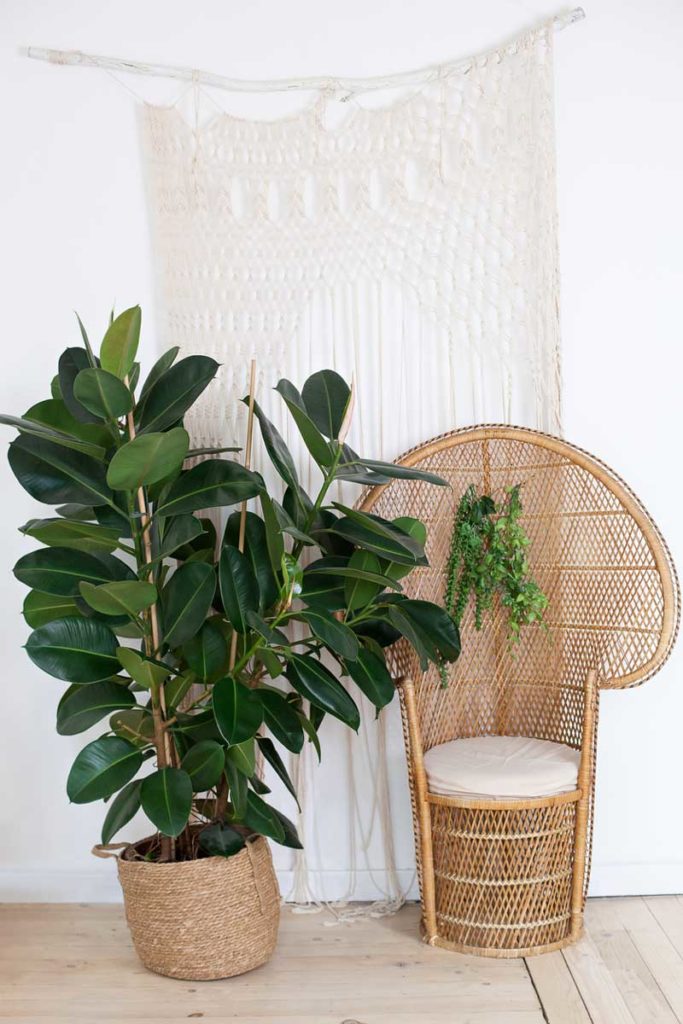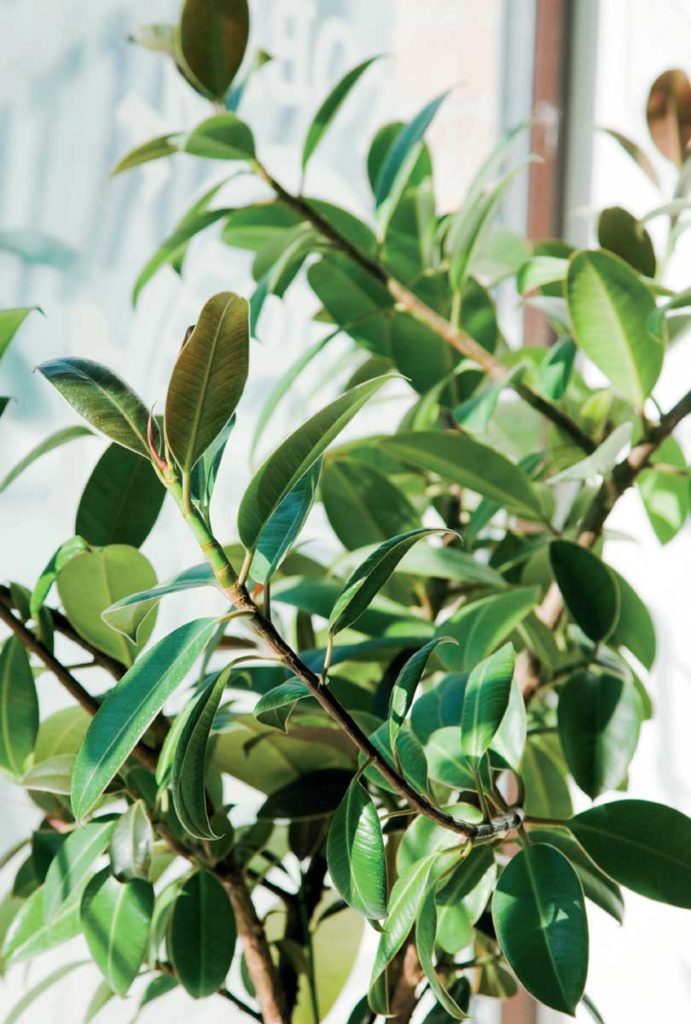rubber flower care One of the most researched topics of the last few days. Planted Evim’s Naz Irmak Saf explained all the details on rubber care, watering, reproduction and soil selection to Evim readers.
WHAT IS RUBBER FLOWER?
Family Moraceae (mulberry). Ficus elastica Type. Its homeland are tropical regions of Asia. It has large, dark green, glossy leaves that remain evergreen. It can grow up to 2 meters high.
Although the rubber plant is a long-lived plant, it needs a lot of air. Unfortunately, if the maintenance is to be done indoors and you cannot perform the maintenance in a place where there is adequate air, this long-lived plant will become diseased and shed its leaves over time.
WHERE DOES RUBBER TREE GROW?
The homeland of the rubber plant is Northeast India, Nepal, Bhutan, Myanmar, the Yunnan region of China, Malaysia and Indonesia. The trunk of the old rubber tree is a feast for the eyes. In our country, you have the opportunity to witness this visual feast up close at Adana Ataturk Park. Again, it is possible to come across a gum tree in the streets or parks of the Aegean and Mediterranean regions.
It is a very common herb in some parts of India. On the banks of the river, the roots of the rubber tree are carried unabridged across the river. So it serves as a bridge. Since it has a thick body, it has no risk in terms of strength. There are living bridges that have existed for more than 500 years.
PROPERTIES OF THE RUBBER FLOWER
With his thick body and long length, he is breathtakingly beautiful. As the tree grows, its leaves become smaller.
WHAT DOES RUBBER MEAN?
The word gum comes from the Quechua word kauchuk, a South American people. It means weeping tree. Because its body structure resembles a flowing body of water.

TIPS ON CARE FOR RUBBER FLOWERS
One of the important points when caring for rubber flowers is soil selection. The rubber flower does not particularly like acidic soil. For indoor plants, it does not retain water, the consistency is soft, peat or coco peat, pumice and perlite stones are abundant. houseplant soil available. It does not like very dense soil. However, in order for the stem to stand upright in the pot, it should be lightly compacted with soil from the sides.

It is a member of the Mulberry family. Its homeland are tropical regions of Asia. It has large, dark green, glossy leaves that remain evergreen. It can grow up to 2 meters high. Adding some burned manure, leaf rot, loam and coarse river sand to the garden soil will provide the ideal soil for it. He loves water. In summer it likes to be watered abundantly. You can spray the leaves with water or even wipe them with a damp cloth. In winter you can reduce the water supply. However, if the place is hot, the need for water may increase. It prefers light or semi-shady locations. It is temperature resistant up to 10˚C. It will be unlucky in colder weather than him. In summer and autumn, you can give liquid fertilizer for indoor plants every 15 days. You can propagate it by the steel taking method.
RUBBER FLOWER WATERING
It thrives in moist environments. For this reason, you can spray water on the underside of the leaves, especially in summer. He also likes to wipe his leaves with a damp cloth. You can water it by controlling soil moisture. Watering from stem to soil while watering keeps the plant happy.
HOW TO GROW RUBBER AT HOME?
It is a plant that needs a lot of air. Because of this, you can make space in front of a window where it can air one-to-one. However, be sure to choose a location where there is no direct scorching sun hitting it. It is suitable for planting in a bright spot where it will not be exposed to the scorching sun and will receive morning or evening sun throughout the day. It is important to pay attention to a balanced sun exposure. It needs the sun for leaf health. You can make sure it gets filtered daylight, what we call behind the scenes.
see also

Gum Blossom Diseases: Why Does It Get Sick?
Breeze, draft, windshould not be exposed too much. Again contact with another object, It is also negatively affected by conditions such as air conditioning, stove, proximity to heating. drying on the leaf surface making it clear to us that he doesn’t like his place.
Again Yellowing of the gum petals When you encounter such a problem, you may first consider whether the place is suitable. If the site is suitable, you can consider other options and arrange for methods such as soil change and watering.
HOW TO CHOOSE RUBBER FLOWER POTS?
This is important when choosing your flower pots as she likes to breathe. You can choose a deep pot with more than one air hole at the bottom that the plant will fit comfortably in. Changing the orientation of the rubber plant towards daylight over time will allow the plant shape to develop more upright.
RESTING PERIOD OF RUBBER FLOWER
The rubber plant goes dormant several times a year. In the meantime, the system actually continues to work quickly. It is preparing for the next production. You can tell the dormancy process by the red bud on top not developing.
REPRODUCTION OF GUM FLOWERS
During the dormant period, you can prune and propagate the pruned branches. You can root the pruned branches in still water at room temperature. During the rooting process it is important to refresh the water every 10-15 days. After the root length has reached at least 10 cm, you can transplant the plant into the pot.
Pruning can be done in mid-spring or in the second week of September in a balance of cool and heat. You can do this with the help of a sterile flat-tipped cutter.
How do you take care of a yucca plant? Is yucca blooming?